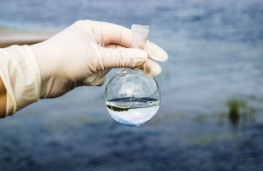Dissolved oxygen (DO) is a critical parameter in assessing water quality and the health of aquatic ecosystems. To accurately measure DO levels, researchers, environmentalists, and scientists rely on specialized tools called dissolved oxygen probes. In this article, we will explore how a dissolved oxygen probe works and its significance in different applications.
A dissolved oxygen probe, also known as a DO probe or an oxygen sensor, is an analytical instrument designed to measure the concentration of dissolved oxygen in water. The probe’s primary purpose is to monitor oxygen levels, which is vital for understanding the water’s oxygen content and its ability to support aquatic life.

Dissolved oxygen probes operate based on the principles of electrochemistry. They typically consist of a cathode and an anode submerged in the water sample. Here’s how the probe works:
The Cathode: The cathode acts as the site for the reduction reaction of oxygen. It is typically made of a noble metal or a semi-permeable membrane coated with an electrolyte. When oxygen molecules encounter the cathode surface, they undergo a reduction reaction and combine with water and electrons to form hydroxide ions (OH-).
The Anode: The anode serves as the location for the oxidation reaction. It is usually made of silver or gold. The anode reacts with the hydroxide ions produced at the cathode, releasing electrons and generating oxygen gas.
Measurement Circuit: The dissolved oxygen probe is connected to a measurement circuit that registers the current produced by the electrochemical reactions at the cathode and anode. The magnitude of the current is directly proportional to the concentration of dissolved oxygen in the water.
Temperature Compensation: Dissolved oxygen measurements are influenced by water temperature. To ensure accurate readings, modern DO probes incorporate temperature sensors and apply automatic temperature compensation algorithms.
Calibration: Before use, dissolved oxygen probes require calibration to establish a baseline reading. Calibration involves exposing the probe to a solution with a known DO concentration, allowing it to adjust its measurements accordingly.
Dissolved oxygen probes find applications in various industries and fields due to their ability to provide critical information about water quality. Some common applications include:
In environmental science, DO probes are used to assess the health of aquatic ecosystems. By measuring dissolved oxygen levels in lakes, rivers, and oceans, researchers can evaluate water quality and identify potential pollution or oxygen depletion issues.
In fish farming and aquaculture, maintaining proper dissolved oxygen levels is crucial for the well-being and growth of aquatic species. DO probes help aquaculturists monitor oxygen levels in tanks and ponds, ensuring optimal conditions for fish and other aquatic organisms.
In wastewater treatment plants, DO probes play a vital role in monitoring oxygen levels during the treatment
process. Proper oxygenation is necessary to support the growth of beneficial bacteria that help break down organic matter in the wastewater.
Dissolved oxygen probes are valuable tools in research and educational settings. They enable students, scientists, and researchers to explore the principles of water quality and understand the impact of various factors on dissolved oxygen levels.
Some industrial processes, such as brewing and fermentation, require precise control of dissolved oxygen levels to ensure optimal product quality and yield. DO probes help industries monitor and regulate oxygen content during these processes.
Frequently Asked Questions (FAQs)
Q: Can dissolved oxygen probes be used in seawater?
Yes, dissolved oxygen probes can be used in seawater. However, it’s essential to choose a probe specifically designed for seawater applications to ensure accurate and reliable measurements.
Q: How often should I calibrate my dissolved oxygen probe?
The frequency of calibration depends on the manufacturer’s guidelines and how frequently you use the probe. In general, it is recommended to calibrate the probe before each use and periodically during extended use.
Q: Can I use a dissolved oxygen probe in extreme temperatures?
Most dissolved oxygen probes have specified operating temperature ranges. It’s crucial to use the probe within these limits to obtain accurate readings. Extreme temperatures may affect the probe’s performance.
Q: Can dissolved oxygen probes be used in the field?
Yes, many dissolved oxygen probes are portable and designed for field use. These probes are rugged and equipped with features to withstand various environmental conditions.
Q: How do I clean and maintain my dissolved oxygen probe?
Proper maintenance and cleaning are essential to ensure accurate measurements. Follow the manufacturer’s guidelines for cleaning and storage to prolong the life and performance of the probe.
Q: Can dissolved oxygen probes measure oxygen levels in the air?
No, dissolved oxygen probes are designed specifically for water applications. To measure oxygen levels in the air, you would need a different type of oxygen sensor.
Dissolved oxygen probes play a crucial role in monitoring and assessing water quality in various applications. By harnessing the principles of electrochemistry, these probes provide valuable insights into the dissolved oxygen content of water samples. Whether used in environmental monitoring, aquaculture, wastewater treatment, or research, dissolved oxygen probes contribute to our understanding of aquatic ecosystems and the factors that influence water quality.